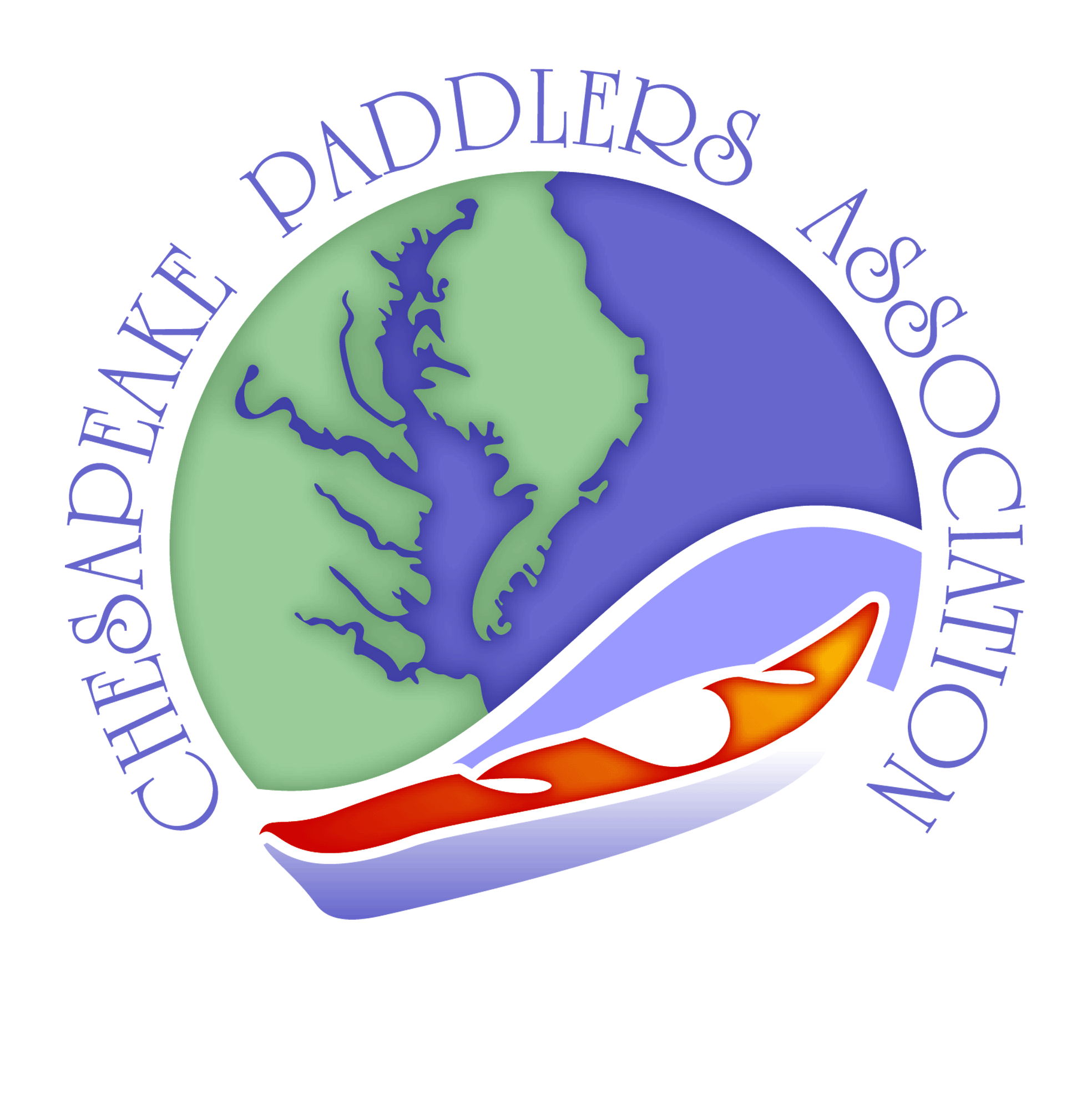I love May! This is the time of year when the water is warming up, days are getting longer, and the winter gear can get stowed away for another year. The CPA calendar shows a busy month, so it should be easy to find a trip you like and get out. Given the moderate temperatures, it is also a good time to camp.
Since moving to the Chesapeake area, I have camped out of my kayak once (on the Patuxent River); it’s something I enjoy and need to do more often. Over the years I have canoe-camped several times, mostly northern Michigan and north of the Canadian border; I also went on a few kayak campers in Northern Michigan and Florida. One difference between canoe and kayak camping is what you can bring with you on the trip.
Every canoe or kayak has a definite advantage or disadvantage, depending on the nature of the trip. On a week-long river trip where fast water, maneuvering, and rocks are all challenges, a Royalex canoe is hard to beat. Besides room for lots of gear, they maneuver well and can take a beating. The downside is that they are heavy, slower, and greatly affected by the wind, and they don’t track as well as a kayak. On a nice lake-to-lake trip with multiple portages, a Kevlar canoe is really hard to beat because of its light weight.
A kayak has definite advantages on a bay or coastline where tracking is more important than maneuvering, and the wind is less of a factor because its hull is less likely to catch the wind. The drawback of a kayak is that it doesn’t have as much space for gear though some kayaks have better gear storage than others. The tradeoff for a kayak with generous storage is that it is probably wider and slower than a fast boat, which has little to no storage available. My personal ‘go-to’ boat is a Valley Nordkapp, a great boat but not practical for any extended camping. The small hatch size makes it almost impossible to pack a sleeping bag, tent, and enough gear to get beyond a weekend trip. One factor to consider is how much gear is required. If you are paddling when you could encounter cold weather or cold water, then the gear list goes up drastically. One way to determine the gear needed is to make three lists: 1) essential gear 2) seriously helpful gear; and 3) nice-to-have gear. After packing the essential gear, then you can figure how much room is left for nice-to-have gear and other luxuries.
The last Canadian canoe camper I did was on the Riviere Bonaventure on the Gaspe Peninsula in Quebec. This trip started from the top of the Chic Choc Mountains and ended in the Atlantic Ocean near the town of Bonaventure, QC. Since we went in May (way too early to be that far north), it was quite an adventure. The plan was to start from a lake at the top of the mountain and paddle to the ocean. The problem was that the lake was frozen and snow blocked the entrance to the lake. An outfitter was able to get us to the river just below the lake where we discovered that the whole top of the mountain had been burned over the previous year. It was about 40 degrees when the outfitter dropped us off, and it soon began raining; as luck would have it, there were no suitable campsites nearby. The only thing to do was to start paddling. The river was choked with deadfalls from the fire, and the current crazy fast. While on the lookout for a suitable campsite, we paddled about 15 miles before clearing the burned area. Then, we were in a canyon with huge drops, and no place to get out of our boats. By the time we left the canyon, it was almost dark, and we had traveled about 30 miles. We were all soaked to the bone and chilled. Needless to say, some of us were grumpy. Just as we left the canyon, we spotted a cabin. At last we had our place to stop. A sign on the cabin read, “Please respect my cabin and leave it as you found it.” This cabin was like heaven, so we spent two nights. In return for the hospitality, we rebuilt the porch and cut plenty of firewood.
Another consideration for camping is food. My travel companion is my friend Charley, a backcountry gourmet, so we eat well. One advantage of a roomier boat is the quality of the food to bring. A kayaker had better love freeze dried food! While camping, we always hang our food up in a tree a little distance from our tent. You do not want a mad bear jumping up and down trying to get your bag when it is hanging over your tent. One of my former paddling companions insisted that bears could not smell food through a dry bag. He learned otherwise while solo camping on the north shore of Lake Superior. He was in his Megamid tent when he heard a swish in the middle of the night. He rolled over to a sky full of stars. Startled awake, he realized a bear had swatted a huge hole in the top of his tent. That was the last time he camped with food in the tent.
Time to research a great paddle camping destination. Happy Paddling – ’tis the season!
~ Bill
